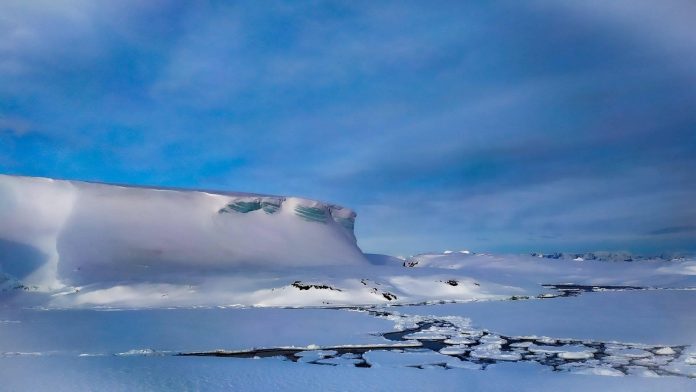Аномалії температур в Антарктиці стали ще однією ознакою глобального потепління.
Незважаючи на те, що Антарктика переживає зиму, на українській полярній станції “Академік Вернадський” 16 липня було зафіксовано значне підвищення температури. Максимальна добова температура піднялася з –4,2°С до +4,5°С. Таке різке потепління тривало майже дві доби, супроводжувалося дощем та мокрим снігом. Подібні температури були зафіксовані також на британській станції “Розера”, що знаходиться ще ближче до Південного полюсу.
Науковці пояснюють ці аномалії явищем, відомим як “атмосферна ріка” — вузька смуга з високою концентрацією атмосферної вологи, що швидко переносить теплі маси повітря з тропіків у полярні регіони. Як зазначає Національний антарктичний центр, такі зміни можуть мати серйозні наслідки: посилення процесів танення льодовиків, розпріснення прибережних вод та руйнування екосистем як на білому континенті, так і в навколишньому океані.
Науковці підкреслюють, що в останні п’ять років температури на станції “Академік Вернадський” рідко опускаються нижче -10°С, тоді як у попередні п’ять років такі температури були рідкими, але все ж досягали нижче -15°С. До 1980-х років зимові температури в Антарктиці опускалися до -30°С. Ці зміни свідчать про виразне потепління в Антарктиді і відображають загальну тенденцію глобального потепління.
Кліматична криза та її глобальні наслідки
Кліматична криза не тільки змінює температуру в полярних регіонах, але й має вплив на тривалість дня на Землі. Масове танення полярних льодів призводить до перерозподілу води з високих широт у світові океани. Це робить Землю більш сплюснутою або товстою, що уповільнює обертання планети і подовжує день. Зміни у тривалості дня, хоча й вимірюються мілісекундами, можуть мати серйозні наслідки для інтернет-трафіку, фінансових транзакцій та GPS-навігації, які залежать від точного хронометражу.
Дослідження Національної академії наук США підкреслює, що ці зміни є результатом діяльності людини, яка перетворює Землю і конкурує з природними процесами, що існували протягом мільярдів років. Танення льодовикових щитів Гренландії та Антарктики через глобальне потепління демонструє, як людська діяльність може впливати на планетарні процеси і поглиблювати глобальні екологічні проблеми.


